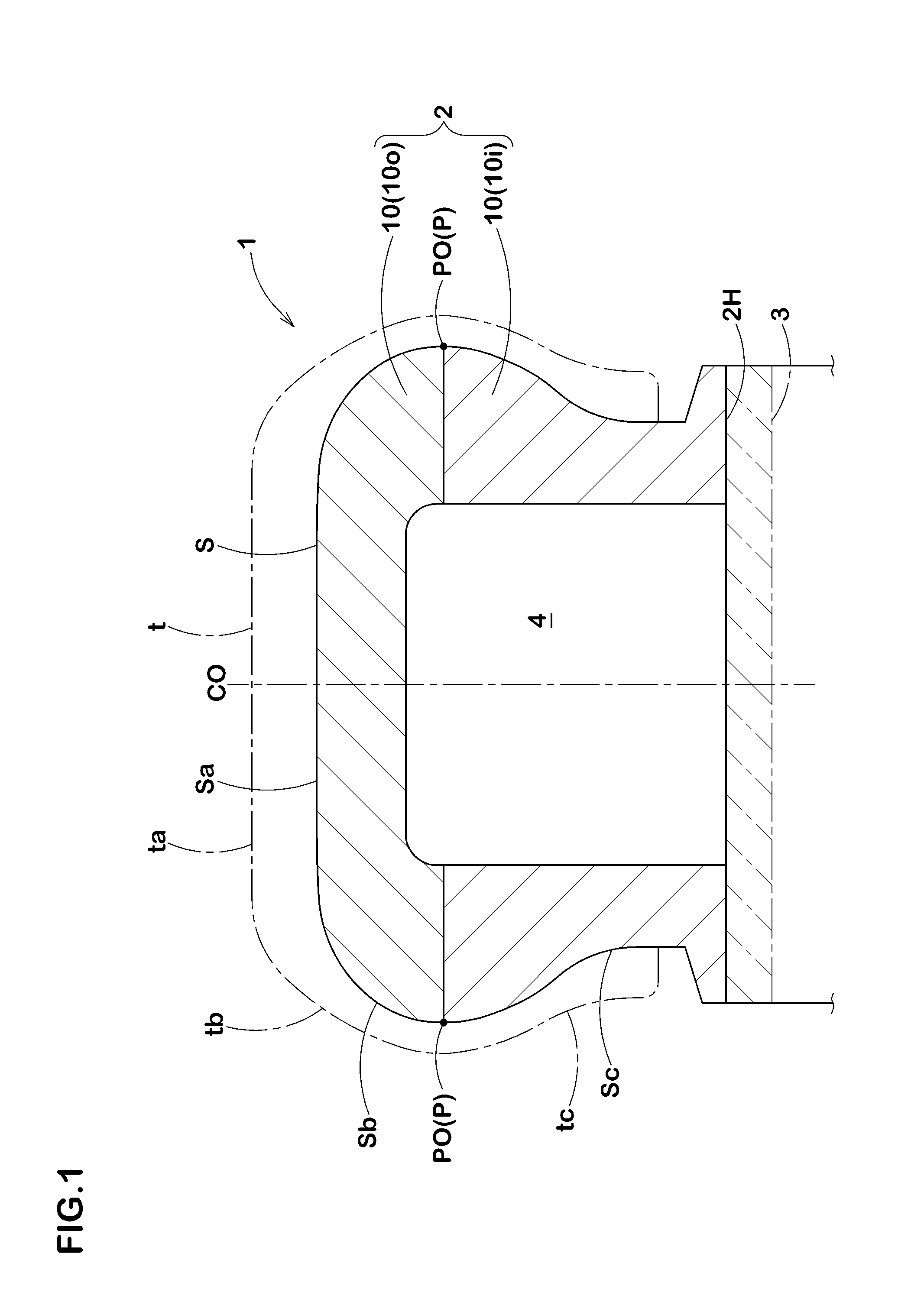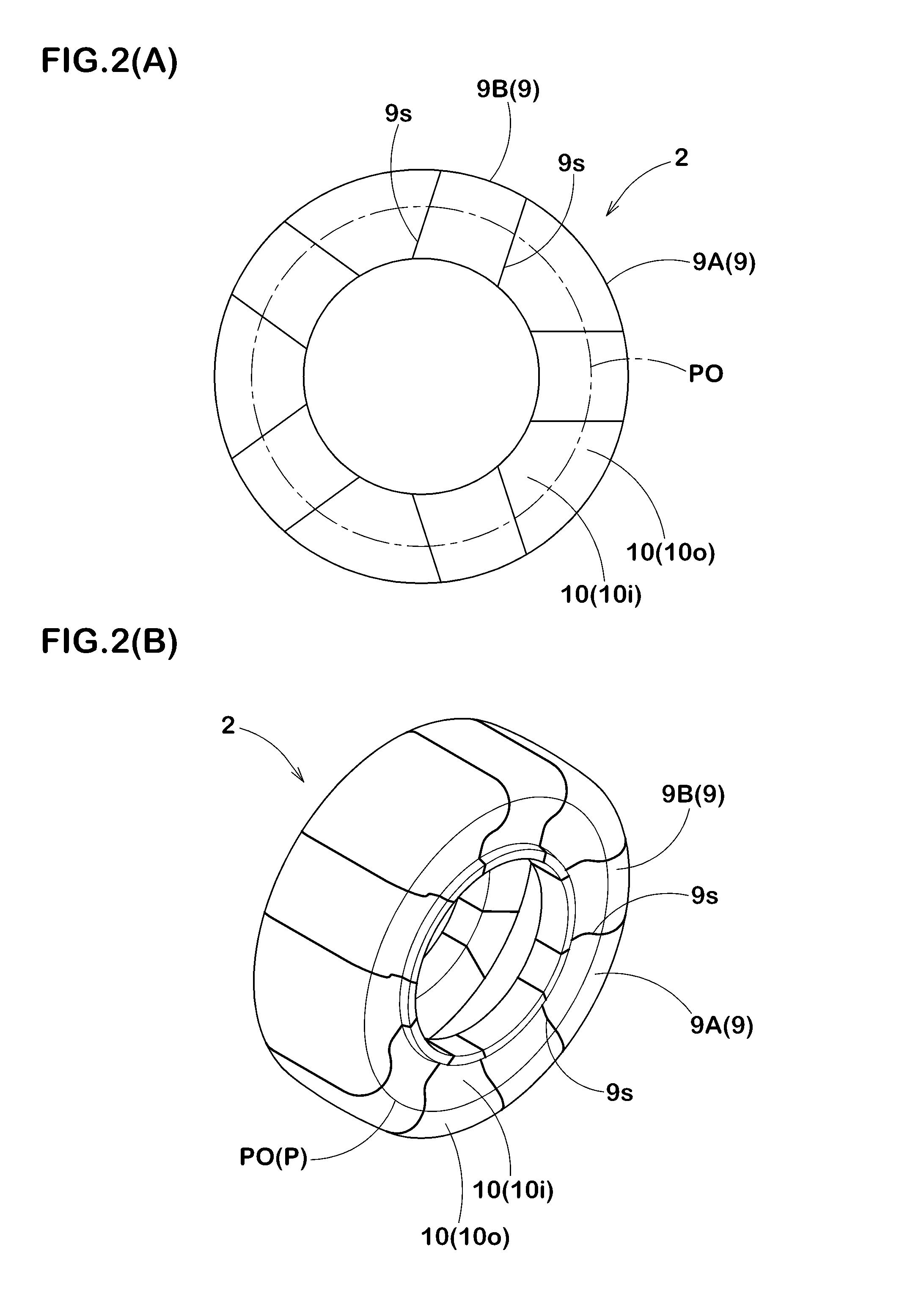Rigid core for forming tire
a technology of rigid core and tire, which is applied in the field of rigid core for tire formation, can solve the problems of deterioration of tire quality, and achieve the effects of reducing minimizing the non-uniformity of expansion, and high thermal expansion coefficien
- Summary
- Abstract
- Description
- Claims
- Application Information
AI Technical Summary
Benefits of technology
Problems solved by technology
Method used
Image
Examples
examples
[0048]To confirm the effects of the present invention, core bodies for forming a pneumatic tire of a tire size 195 / 65R15 were produced experimentally based on specifications presented in Table 2. The individual core bodies were subjected to a temperature rise from normal temperature of 20° C. to 150° C. so as to be subjected to thermal expansion, and outer shapes of the individual core bodies were respectively measured using a laser displacement meter.
[0049]Each of measurement results was superimposed with a size of the cavity surface of the vulcanization mold after the thermal expansion so as to obtain a gap (g) with respect to the outer surface of the core body, and the gap (g) was represented by an index. The gap (g) is obtained by representing, by an index, a ratio of the gap of the core body after the thermal expansion to the gap of the core body before the thermal expansion. Table 2 shows the gaps (g) at evaluation positions J1 to J4 shown in FIG. 8. Smaller variations of the ...
PUM
| Property | Measurement | Unit |
|---|---|---|
| temperature | aaaaa | aaaaa |
| temperature | aaaaa | aaaaa |
| temperature | aaaaa | aaaaa |
Abstract
Description
Claims
Application Information
 Login to View More
Login to View More - R&D
- Intellectual Property
- Life Sciences
- Materials
- Tech Scout
- Unparalleled Data Quality
- Higher Quality Content
- 60% Fewer Hallucinations
Browse by: Latest US Patents, China's latest patents, Technical Efficacy Thesaurus, Application Domain, Technology Topic, Popular Technical Reports.
© 2025 PatSnap. All rights reserved.Legal|Privacy policy|Modern Slavery Act Transparency Statement|Sitemap|About US| Contact US: help@patsnap.com



